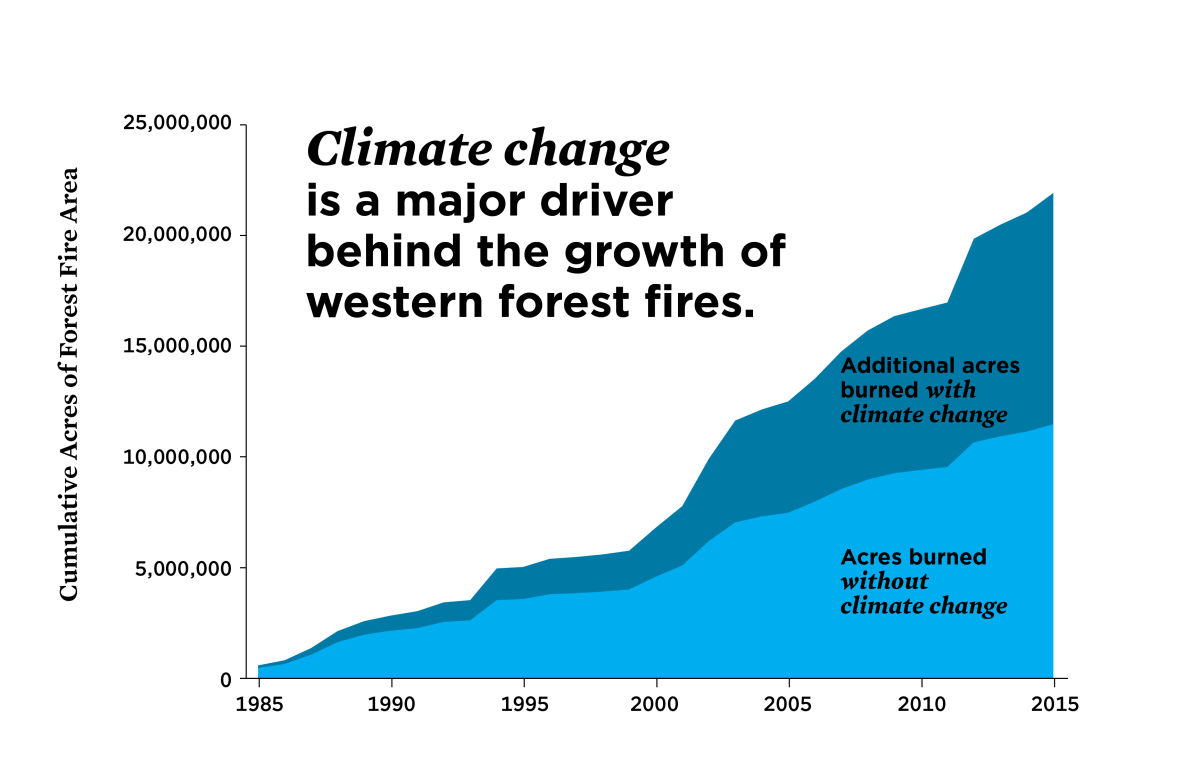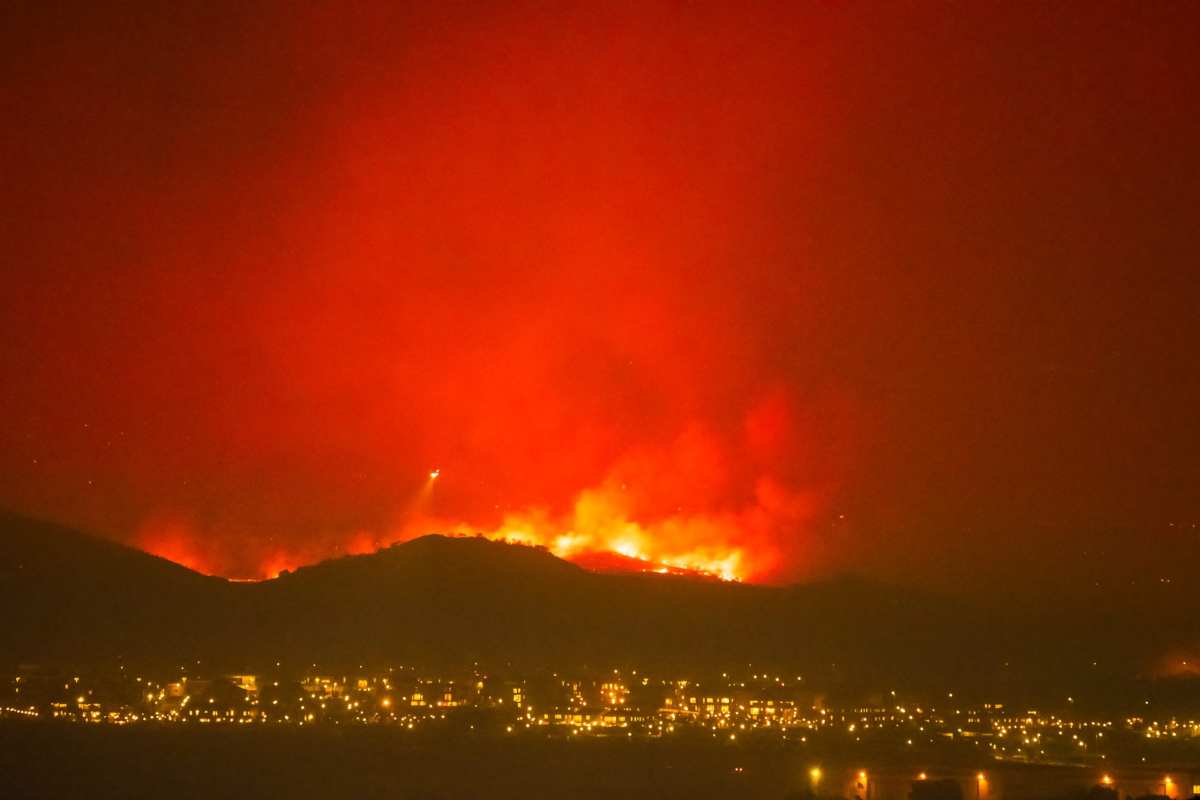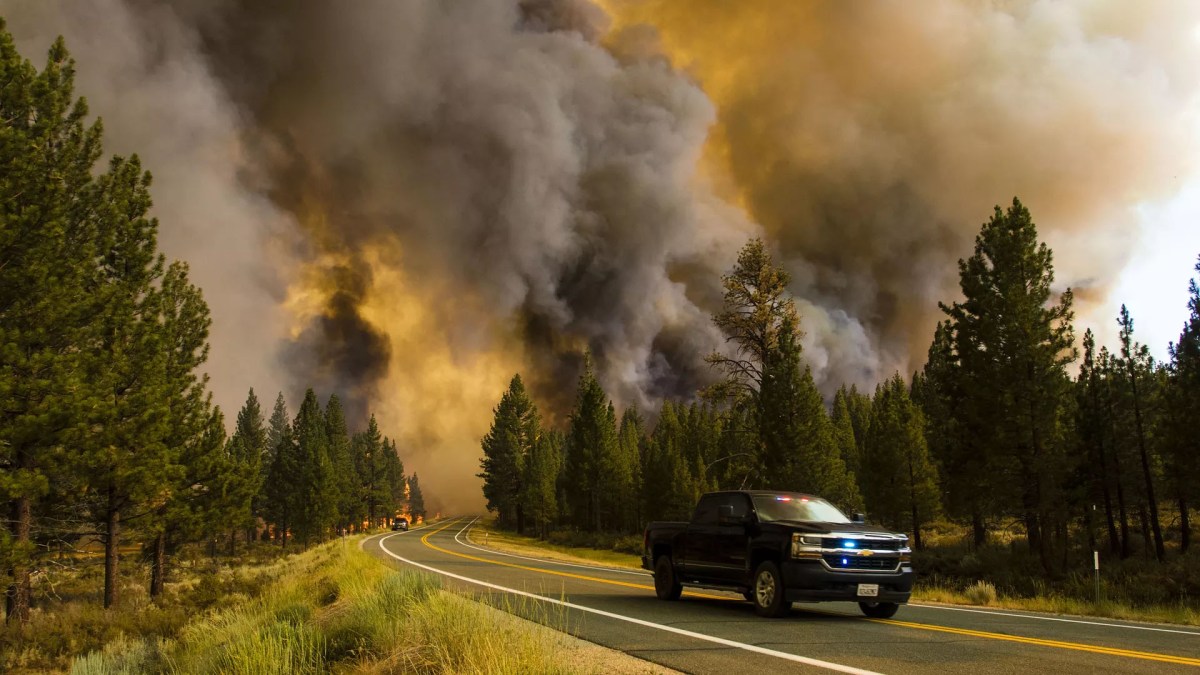Climate change: What role is it playing in the California fires? The answer, unfortunately, is a significant one. California’s increasingly intense and prolonged wildfire seasons aren’t just a matter of bad luck; they’re a direct consequence of a warming planet. Rising temperatures create tinderbox conditions, prolonged droughts desiccate vegetation, and extreme weather events like heatwaves and strong winds fan the flames.
This exploration delves into the complex interplay between climate change and California’s devastating wildfires, examining how rising temperatures, altered precipitation patterns, and extreme weather are transforming the state’s landscape and threatening communities.
We’ll examine how climate change extends wildfire seasons, increases fuel loads (think dry brush and dead trees), and intensifies the very weather patterns that ignite and spread these fires. We’ll also look at how these changes are impacting firefighting efforts and what innovative strategies are being developed to combat this growing threat. Get ready to understand the science behind the smoke and the urgent need for action.
Climate Change’s Impact on California Wildfires: Climate Change: What Role Is It Playing In The California Fires

California’s wildfire season has become increasingly severe and prolonged, largely due to the accelerating effects of climate change. Rising temperatures, altered precipitation patterns, and more frequent extreme weather events are creating a perfect storm for devastating wildfires. This article explores the multifaceted relationship between climate change and California’s wildfires, examining the impact on wildfire season length and intensity, fuel loads, extreme weather events, wildfire suppression efforts, and provides illustrative examples of climate change’s visible consequences.
Increased Wildfire Season Length and Intensity
Higher temperatures, a direct consequence of climate change, extend the wildfire season significantly. Warmer temperatures dry out vegetation more quickly, creating readily available fuel for fires to ignite and spread rapidly. This extended period of heightened risk means longer durations of active fire seasons, leading to more extensive damage and increased challenges for firefighting efforts. Decreased precipitation and prolonged drought conditions further exacerbate this problem, creating drier landscapes and increasing the flammability of vegetation.
For instance, the 2020 wildfire season was exceptionally long and destructive, directly linked to the record-breaking heatwave and severe drought conditions experienced that year.
| Year | Fire Name | Acres Burned | Climate Change Factors |
|---|---|---|---|
| 2018 | Camp Fire | 153,336 | High temperatures, strong winds, drought |
| 2020 | August Complex | 1,032,648 | Lightning strikes during drought, record heat |
| 2021 | Dixie Fire | 963,309 | Prolonged drought, high temperatures, dry winds |
| 2022 | McKinney Fire | 60,238 | Extreme heat, dry fuels, lightning |
Fuel Load and Climate Change’s Influence

Climate change significantly alters vegetation growth patterns, impacting the amount of flammable material available to fuel wildfires. Increased carbon dioxide levels can initially stimulate plant growth, leading to a higher fuel load. However, prolonged drought conditions kill off significant portions of this vegetation, turning it into dry, readily combustible fuel. This dead vegetation, combined with the increased density of live, dry vegetation, creates a dangerous combination for intense and rapidly spreading fires.
Different vegetation types respond differently to these changes; for example, drought-resistant shrubs may thrive while other species die off, altering the overall fuel composition and fire behavior.
Okay, so California’s burning – climate change is making those wildfires way worse, creating drier conditions and longer fire seasons. It’s a huge problem, and while that’s happening, completely unrelated, check out this news: Manchester Airport runways reopen, but passengers warned of further delays. Back to the fires, though – we really need to address the climate crisis to prevent these devastating events from becoming even more frequent and intense.
- Increased density of dry underbrush
- Larger amounts of dead trees and woody debris
- Shift in vegetation types towards more flammable species
- Increased flammability of existing vegetation due to drought
Extreme Weather Events and Wildfires, Climate change: What role is it playing in the California fires
Climate change is increasing the frequency and intensity of extreme weather events, which significantly contribute to wildfire risk. Heatwaves create tinder-dry conditions, while strong winds rapidly spread flames. For example, the combination of extreme heat and Santa Ana winds has been a devastating factor in numerous California wildfires. These events often interact with pre-existing drought conditions, creating ideal conditions for ignition and rapid fire spread.
California’s wildfires are getting worse, fueled by climate change’s impact on hotter, drier conditions. It’s a serious situation, and while it might seem unrelated, check out this inspiring story about Antonin Kinsky and his drone work, I am happy – Antonin Kinsky could not have dreamed of a better , which highlights the power of technology. Understanding the link between climate change and these devastating fires is crucial for finding solutions and building a more resilient future.
Wildfires, in turn, release significant amounts of greenhouse gases, creating a feedback loop that exacerbates climate change.
Climate models predict a continuation and intensification of these trends, forecasting more frequent and severe heatwaves, droughts, and strong winds in California, leading to a higher likelihood of larger and more destructive wildfires in the future. The 2020 wildfire season, with its numerous large fires, serves as a stark example of this projected future.
Okay, so California’s wildfires are getting worse, right? A big reason is climate change – hotter, drier conditions are like fuel for the flames. It’s a tough problem, kind of like coaching a hockey team, where you need a strong work ethic like the one described in this article about Brind’Amour and Berube: Brind’Amour, Berube share common work ethic leading Hurricanes.
Just as they need dedication to win, we need serious dedication to tackle climate change and its impact on these devastating fires.
Climate Change and Wildfire Suppression Efforts

Climate change significantly challenges traditional wildfire suppression strategies. The increasing size and unpredictability of wildfires, fueled by climate-driven conditions, overwhelm resources and make containment more difficult. Larger fires burn longer, requiring more extensive and prolonged firefighting efforts. The increased frequency of wildfires also strains resources, leaving less capacity to respond effectively to each individual fire.
| Method | Effectiveness | Cost | Climate Change Impact |
|---|---|---|---|
| Controlled Burns | High (when conditions are right) | Moderate | Can reduce fuel load, mitigating some climate change effects |
| Aerial Fire Suppression | Moderate to High (dependent on fire size and wind conditions) | High | Effectiveness reduced by extreme weather conditions |
| Ground Crews | High (for smaller fires, less effective in extreme conditions) | Moderate to High | Overwhelmed by larger, more frequent fires |
Visualizing Climate Change’s Impact
Imagine a photograph of a wildfire raging through a parched landscape. Dead, brown trees stand skeletal against a backdrop of billowing, dark smoke. The flames leap from tree to tree, driven by strong winds, consuming everything in their path. The vegetation is sparse and brittle, the result of years of drought. The image powerfully conveys the severity of the wildfire, clearly demonstrating the impact of climate change-induced drought conditions on fuel loads and fire behavior.
A before-and-after image comparison would show a lush forest before the wildfire, teeming with life, and then the same area afterward, reduced to a blackened wasteland, highlighting the extensive and lasting damage caused by a climate change-exacerbated wildfire. The scale of destruction would be visually striking, emphasizing the devastating impact on the ecosystem and landscape.
A map of California illustrating increased wildfire risk zones would show significant portions of the state, particularly in the mountainous regions and inland areas, highlighted in deep red or orange, indicating extremely high risk. Specific geographical areas, such as parts of the Sierra Nevada and the central valley, would be clearly identified as particularly vulnerable due to their combination of dry climate, dense vegetation, and increased frequency of extreme weather events.
The map would also incorporate data on projected future risk based on climate models, demonstrating the ongoing and increasing threat posed by climate change.
Summary
In short, climate change isn’t just contributing to California’s wildfires; it’s fundamentally reshaping the state’s fire regime. Longer, hotter, and drier conditions create a perfect storm for catastrophic fires, exceeding the capacity of traditional firefighting methods. Understanding this complex relationship is crucial for developing effective mitigation and adaptation strategies. The future of California’s landscapes and communities depends on our ability to address the root cause: a rapidly changing climate.
We need proactive solutions, from improved forest management to aggressive climate action, to safeguard the state from the ever-increasing threat of wildfire.
Question Bank
What specific vegetation types are most susceptible to climate change-fueled fires?
Vegetation already stressed by drought, such as chaparral and certain types of pine forests, are highly vulnerable. Their dryness makes them easily ignitable and prone to rapid fire spread.
How does climate change affect the effectiveness of firebreaks?
Intense heat and strong winds can easily overcome traditional firebreaks, rendering them less effective in containing larger and more rapidly spreading fires.
Are there any long-term economic impacts of climate change-related wildfires?
Absolutely. The costs associated with firefighting, property damage, economic disruption, and long-term ecological recovery are staggering and continue to rise with the increasing frequency and intensity of wildfires.
What role does deforestation play in exacerbating the problem?
Deforestation reduces natural barriers to fire spread and removes trees that help regulate the water cycle, contributing to drier conditions and increased wildfire risk.
